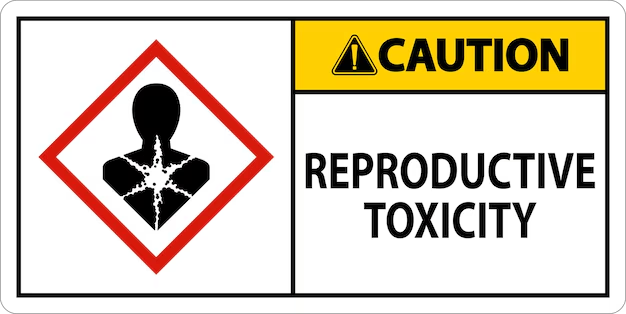16 September 2025
ENDOCRINE DISRUPTORS AND REPRODUCTIVE TOXIC SUBSTANCES
WHAT’S CHANGING FOR THE CHEMICAL INDUSTRY?
Welcome to a new edition of “Chemistry Under the Lens,” the UNCOATED column that explores regulatory changes in the world of chemical substances. Today, together with Dr. Filippo Busolo, expert in chemical substance management and hazardous goods transport safety, we focus on two critical issues for the industry: reproductive toxicants and endocrine disruptors. Two areas that, in recent years, have been affected by major regulatory developments, such as Directive (EU) 2022/431 and Regulation (EU) 2023/707.
Let’s take a look at the practical implications for companies.
What is meant by “reproductive toxicity”?
This term refers to harmful effects on sexual function and fertility in adult men and women, as well as on the development of offspring, following exposure to a substance or mixture.
The CLP Regulation classifies such substances into the following categories:
- Category 1: substances known or presumed to be toxic for human reproduction;
- Category 1A: substances known to be toxic for human reproduction;
- Category 1B: substances presumed to be toxic for human reproduction;
- Category 2: substances suspected of being toxic for human reproduction.
There is also a distinct hazard category concerning effects on or via lactation.

And endocrine disruptors?
An endocrine disruptor (ED) is a substance or mixture that alters one or more functions of the endocrine system, causing adverse effects in an intact organism, its offspring, populations or subpopulations.
The toxicity mechanisms of EDs can be multiple. The most studied involves binding to one or more hormone receptors such as estrogen, androgen, progesterone, thyroid, and vitamin D.
The CLP Regulation classifies ED substances affecting human health into two categories:
- Category 1: known or presumed endocrine disruptors;
- Category 2: suspected endocrine disruptors.
What are the regulatory updates?
Two recent regulatory frameworks have a direct impact on these issues:
- Directive (EU) 2022/431, which amends the directive on protection from carcinogenic and mutagenic agents (CMD), including reproductive toxicants;
- Regulation (EU) 2023/707, which updates the CLP by introducing new hazard classes related to EDs.
In addition, Regulation (EU) 2020/878, amending Annex II of the REACH Regulation, introduced in the Safety Data Sheet (SDS) specific references to endocrine-disrupting properties (sections 2.3, 3.2, 11.2 and 12.6).
Why are these regulations so important?
The adoption of Directive 2022/431 stems from growing awareness of the risks related to fertility, pregnancy, and fetal development in industrial environments exposed to chemicals.
Protecting workers from these substances is a key priority to safeguard the health of people and future generations.
The directive introduces two important distinctions:
- Reproductive toxicants with no threshold: no safe level of exposure exists;
- Threshold substances: a limit exists below which no health risks are observed.
In addition to environmental monitoring, biological monitoring is encouraged as a tool to measure actual absorption of the substance by workers.
The directive was transposed by Member States on April 5 and will amend Chapter II, Title IX of Legislative Decree 81/08 in Italy.
Which substances are involved?
Among those for which occupational exposure limit values have been introduced:
- N,N-Dimethylacetamide (CAS 127-19-5)
- N,N-Dimethylformamide (CAS 68-12-2)
- 2-Methoxyethanol (CAS 109-86-4)
- 2-Methoxyethyl acetate (CAS 110-49-6)
- 2-Ethoxyethanol (CAS 110-80-5)
- 2-Ethoxyethyl acetate (CAS 111-15-9)
- 1-Methyl-2-pyrrolidone (CAS 857-50-4)
- Bisphenol A (CAS 80-05-7)
At the European level, approximately 150 substances are recognized for their reproductive toxicity.
Where to find official information?
The main regulatory and informational sources are cited as examples:
- The Candidate List of substances of very high concern (SVHC) on the ECHA website;
- The European list of endocrine disruptors.
Which substance categories require closer monitoring?
Without claiming to be exhaustive, here are the main categories to consider:
- Organic solvents
- Alkylphenols (e.g., Bisphenol A)
- Phthalates
- Cadmium compounds
- Polycyclic aromatic hydrocarbons
- Brominated flame retardants
- Metals
- Biocides
And what is ALIT doing?
Thanks to continuous research and development combined with regulatory compliance, ALIT Technologies carefully selects raw materials that comply with the new regulations and support companies in meeting both European and national requirements.
Every company that uses or markets chemical substances must now reassess its production cycle.
This too is part of ensuring tomorrow’s safety.



